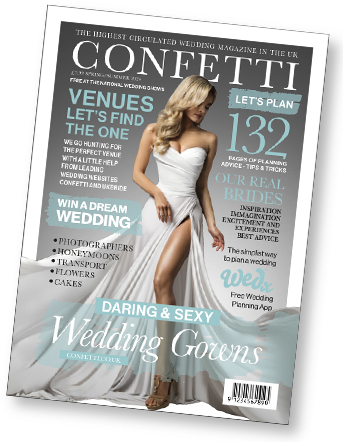The engagement ring originally served a double purpose. It was partial payment for the bride and a symbol of the groom’s honourable intentions…

Image from Diane & David’s real wedding
We’ve got the Romans to thank for introducing wedding rings to Britain. Later the Cromwellians rejected these symbols of the marriage contract as ‘Popish’, but the custom soon made a comeback with the reestablishment of the Royalists in 1660 and has been with us ever since.
Rings aren’t just for women or for weddings. Men can wear them too, and some couples exchange rings on engagement, usually a signet ring for the prospective groom, in the same metal as his fiancé’s ring.
The engagement ring originally served a double purpose. It was partial payment for the bride and a symbol of the groom’s honourable intentions. The diamond first appeared in medieval Italy, a stone that symbolised enduring love because of its hardness. A diamond, being more expensive than gold, was also seen as a firmer promise as it offered greater security.
Traditionally, the man pays for the engagement ring. One popular guideline (largely perpetrated by the diamond industry!) is that it should cost him a month’s salary. If this is beyond your budget, don’t feel pressured: buying jewellery you can’t really afford is not necessarily the best start to married life…
Traditionally, if the engagement is called off by the bride-to-be, the engagement ring should be returned. If the man calls it off, she gets to keep it and, if she’s got any sense, to flog it to the highest bidder!

